#poultry man chronicles
Text
Drew some stuff for @petrichormeraki 's Poultry man Chronicles au
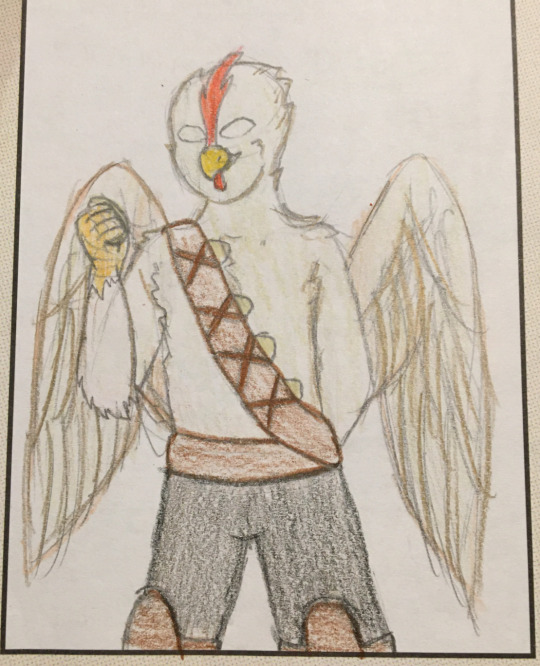

49 notes
·
View notes
Text
I saw @petrichormeraki’s Poultry Man chronicles and have been low-key obsessed. So I wrote a thing! It’s based off an art submission they got, which you can find here
TW: MENTIONS OF BLOOD, INJURIES AND EXTREME GUILT
Enjoy!
Doctor Cyber grinned beneath his helmet, finally, he had Poultry Man. The weapon had worked, knocking that bird out of the sky, and sending him careening into the street below. He stood above the defeated ‘hero’, and picked him up, throwing him over his shoulder, and taking off into the sky, much to the surrounding crowd’s horror.
The creeper hybrid flew back to his base, Poultry Man not stirring even once. Perhaps it hadn’t been such a good idea to hit him with the ray while he was so high up, he didn’t want Poultry Man to get more injured than necessary, he just wanted him off the streets, to keep his friends and family safe from the feathered menace.
“Bring Poultry Man to the lab,” came Scar’s voice over the comm. “I’ve got a containment cell ready for him.”
Doc grunted in acknowledgement, and altered his flight path towards the side of the entrance closest to the lab.
“Prep the med-kit,” Doc said as he landed, when Poultry Man still hadn’t stirred. “I think the crash landing hurt him more than we anticipated.”
“Alright,” Scar replied, a tinge of worry tracing through his voice.
~~~
By the time Doc had reached the lab, Scar had both a containment cell, and a medical bed ready for Poultry Man. Gently, Doc laid the bird-man on the bed, and Scar quickly began to examine his limbs, checking the extent of the damage. Scar furrowed his eyebrows in worry when the hero continued to remain still, especially when he had to pop his shoulder back into its socket.
“This is worse than we thought.” He said to himself. “I’ve never heard anyone, not even an unconscious person, who didn’t at the very least flinch when they get a bone popped back into place.”
Scar quickly grabbed one of the overhanging machines, and began to scan Poultry Man. His gasped sharply as the scan completed, eyes wide with shock and fear.
Doc, now without his helmet and battle suit noticed as he walked over to Scar. “What’s wrong, Scar?” He looked down at the so-called ‘hero’, and back to his friend. “I know I roughed him up a bit, but he’s gotten up from worse.”
Scar, shaking slightly, merely pushed the tablet displaying the scan over to him. “No, he hasn’t.” Scar murmured, almost too soft to hear.
Doc was confused, what did Scar mean by that? And skeptically took the tablet. He too, let out a noise of horror as he realized what it read.
A full body x-ray was displayed on the screen, almost every bone highlighted with at least a break, or multiple cracks. Every rib was cracked in multiple places, at least three were broken, his left arm had shattered, a severe concussion, at least three dislocated joints. No wonder the hero hadn’t stirred. His body shut down to prevent causing further damage, and with this many broken bones? The man was lucky to be alive.
Doc finally managed to tear his eyes away from the screen, and met Scar’s gaze as he bandaged the multiple large gashes across Poultry Man’s body. “His bones are hollow.” He said solemnly. “He’s lucky to be alive.”
The realization hit Doc like a truck. In his quest to protect his friends and family, he’d almost killed someone. His legs felt like jello, but the creeper hybrid forced himself to take deep, shaky breaths and remain calm. He hadn’t killed Poultry Man. He would recover. And Doc had finally taken the menace off the streets.
Reassuring himself, Doc manages to stand up straight once more. “Do you need anything else while you’re fixing him up?” He asks Scar, who has moved on from bandages to setting the broken bones as best he can, and putting them into casts.
“I think I’m good,” Scar responds, finishing up the final cast. “The only thing left would be… the mask.” He says hesitantly. “He probably needs bandages on his head, but I wanted to wait for you to recover before I took it off.” The scarred man considers his next words for a moment. “This should be something we do together.”
Doc nods in acknowledgment, and the two move to the bird-hero’s head. Scar gently lifts his head off the pillow, and Doc, as gently as he can’t, pulls off the chicken-like headpiece. This is what they’d been waiting to do since they started this mission to end Poultry Man’s reign, something they’d been dreaming of for so long. They thought that they’d be ready for whoever was under that mask.
They weren’t.
Twin cries of shock echoed through Area 77, as Scar and Doc stared at the true face of Poultry Man. Only it wasn’t- it couldn’t be him! That would mean that they’d been hunting their friend for months, it would mean that they almost killed someone they considered family multiple times; and that he was now unconscious- potentially in a coma- because of them.
It didn’t matter that the hero’s face was battered, that it was bruised, bloody, and swollen. It was unmistakable. Poultry Man was Grian.
Grian was Poultry Man.
And Doc had nearly killed him.
Both men were in shock, just short of outright refusing to believe it. But the proof was right there, laying in front of them. Doc collapsed to the floor, sobs beginning to rack this body. And Scar was no better, blindly going through the motions of cleaning Poul- no, Grian’s wounds, hoping that by giving hands something to do, he could keep his mind off of their discovery.
It didn’t work.
Both men kept going through every interaction with Grian and Poultry Man that they could remember, the missing pieces falling into place. Grian, always sore, or just not present any time after Poultry Man had a fight, how the two were never in the same place at the same time, Grian would leave, and Poultry Man would show up. The excuses, the constant tardiness Grian demonstrated after Poultry Man showed up? It all finally made sense.
When Scar finished bandaging, he went and sat at a table, silent tears running down his face as he processed everything. Doc had started pacing across the room, guilt crawling up his throat and threatening to choke him. He looked at Grian again, the shallow breaths and stillness so unfitting on their friend.
“Scar,” Doc asked as he looked. Scar picked up his head to see Doc’s eyes glistening with unshed tears. “Are we the bad guys?”
#myctblr#myct#angst#parafic#the poultry man chronicles#poultry man chronicles au#Hermitcraft#Hermitcraft au#petrichormeraki au#docm77#doc#goodtimeswithscar#Scar#Grian#poultry man#poultry man au#Hermitcraft superhero au
153 notes
·
View notes
Text
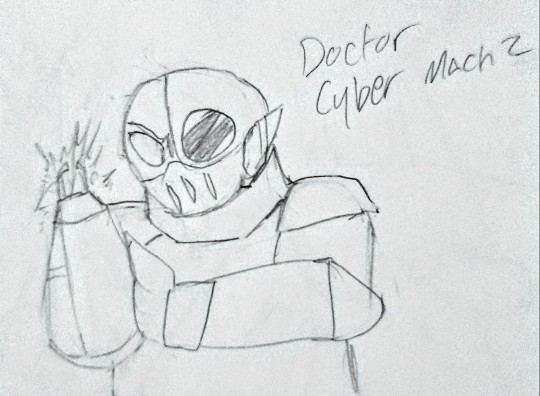

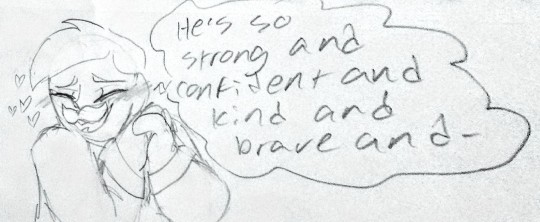


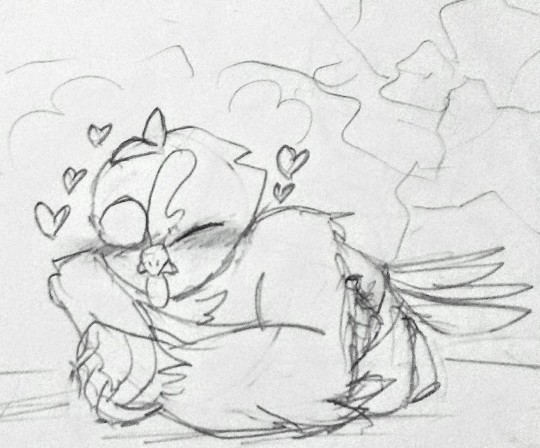
More PMCAU because I got my fire back babey!!! I'm so glad y'all enjoy this AU I've put a lot of work into it :')
174 notes
·
View notes
Text
2021 Reading Log, pt 20
Apparently July is the theme month of “disappointing followups to books I’ve read recently”. And the disappointment gap is widening. Lizards of the World was a minor downgrade compared to Spiders of the World, but this time the shift in quality is rather broader...

96. Scream by Margee Kerr. This is a book about fear, its physiological causes and consequences, and why people seek it out for fun. Kerr is a sociologist who manages a haunted house, and the book sees her visit thrill rides, go legend tripping, and investigate her own anxieties and traumas across three continents. This culminates in her building an “extreme” haunt that incorporates her lessons and collects data at the same time. The book does a good job of talking about the ethical considerations of the fear industry and legend tripping, and she takes pains to make sure that consent and catharsis are important parts of her generated experience.

97. Celebrations of Curious Characters by Ricky Jay. Jay was a curious character in his own right—an expert sleight of hand magician and a chronicler and collector of game, magic and entertainment ephemera. This book is adapted from a 4 minute public radio segment he had for a number of years, interspersed with appropriate images taken from his collection. The articles range from diverse topics as card games of Deadwood, punching yourself in the face as a musical instrument, and a book of how to cheat at poultry competitions. Many of the essays drift in and out of autobiography, including tales of consulting for Leonard Nimoy on a project about conjoined twins, getting a kidney stone on a book tour in Japan, and his relationships with other collectors and antiquarians.

98. The Age of Wood by Roland Ennos. Judging by the title and cover, I thought this book was going to primarily be about the Middle Ages and the Early Modern Era. Not so. This book starts with the evolution of primates in forests and extends to the present day. The thesis is that humans evolved with wood in the form of forests and wooden tools, and that the Stone, Bronze and Iron Ages were all dependent on wood as much as they were their titular materials. Only once humans started to use fossil fuels as their primary energy source did we leave the Wood Age. The book is wildly cross-disciplinary, looking at paleontology, archeology, history, botany, engineering, carpentry… The book does weaken a bit at the end though. The last chapter, about returning to an Age of Wood, can’t seem to make up its mind whether it’s “fossil fuels and limitless growth are inherently unsustainable” or “kids today don’t know how to work with their hands” old man griping.
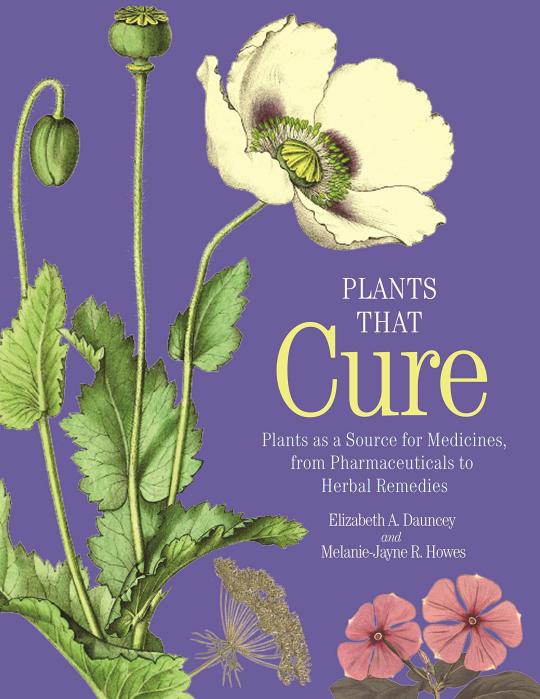
99. Plants that Cure by Elizabeth A. Dauncey and Melanie-Jayne R. Howes. This is a follow up to a book I read last year, Plants that Kill. It is a disappointment in comparison. The book covers more plants than Plants that Kill, but does so in much less detail. It is also very redundant, both between books (opium poppies are even the cover plant on both!) and within the book. Every chapter starts with a summary of the chapter you are about to read, and several plants that are used to treat different diseases appear multiple times. It feels like they had enough actual material for a smaller book, but larded it up so it could be the same size as (and retail for the same amount as) Plants that Kill.

100. The Truth about Lies by Aja Raden. Raden’s Stoned was a pleasant surprise when I read it early this year, so I was looking forward to this. The premise is summed up in the quote “there are no new lies, only new liars”. It covers broad categories of deception through a lens of historical examples (hoaxes, The Big Lie, the Bait and Switch) and explains the psychological shortcuts these lies exploit and the intertwining of communication and deception. Some of it is really good—the book probably has the best explanation of how a pyramid scheme works I’ve read. But (ironically for a book about lies) it’s full of misinformation. Almost everything she says about animals and plants is flagrantly untrue (like, whales evolved from canines and corpse flowers are carnivorous untrue), and she spends a good amount of time defending a fringe theory about the Shroud of Turin (because it supports her claim that it doesn’t matter whether it’s “real” or not). The combination of highs and lows make this a book I have trouble recommending.
17 notes
·
View notes
Text
At the request of my dear friend who recently risen from the dead here is the big brother AU... but superheroes! Big brother AU is created by @petrichormeraki and Fortuna and Atlanta are made by @smileforever3
So since I’m pretty sure the poultry man Chronicles happen in season six but the Big brother AU is in season seven  all the superheroes and villains more or less just disappear or retired.
It all starts out with best girl tizzy going through some of  Zedaph’s things because she’s bored eventually deep within her papa‘s closet she finds two chests and an armor stand with a sheet over it. Inside the first chest was a bunch of merchandise?  she picked up a comic book that said Wormman and the missing cat issue 15 there was more comics and even a costume!
On the armor stand was beat up and slightly bloodied version of the costume. She spent a good couple of hours reading the comics when she was done with what she assumed what’s the final one she moved onto the extra chest on that one there was a sign that said Super cool sidekick that’s totally not evil!! Inside were fabric sewing supplies couple of sketchbooks and what looked to be a toolbox and more comics this time showing Wormman and ... EvilXisuma!  she kept reading!
Eventually though she had an idea! she grabbed as many comics as she could hold she even managed to grab the suit and the two sketchbooks she ran two Zia‘s bass (Zia is the only person she knows that can sew... and her dad is EvilXisuma)
Zia is only mildly shocked she grew up hearing her creator talk about wormMan and his adventures! The thing that shocked her the most is though what is tizzy asking if Zia would be willing to modify the old suit and also be her sidekick! Without zero hesitation she agreed! That’s how the first Super hero of the new generation came to be! Worm girl and her super cool sidekick moth! But without knowing it they started a chain reaction because of you superhero need A villain!
Which is where fractal comes in as the first villain named the end.  Grumbot is the villain carp ghost, The prodigy of Salmon ghost (I know technically it’s Grian but in this it might be an Mumbo? But like he doesn’t know it’s him) 
Aislin has the same problem even though technically he does have super powers which is his plants some thing else happens that makes him a villain and not even he knows that it’s him, there are vex and most of them are mischievous pranksters but there are some... Who are angry at players and evoker. Aislin was made by vex’s he can be affected by them more than other players and even though the vex tried to protect him this new wave of heroics makes the other vex so angry they take Aislinn physical body and uses it two destroy all the hope and happiness! That’s how the villain hex came to be.
Fortuna is the hero known as  Lucky! That’s it are super power it’s just her Luck being maxed out

Atlanta it’s basically the same thing but with her stamina and focus she’s known as the hero Artemis!

Of course Junie is poultry man (part two electric Boogaloo!) 
Kid well they used to be the lamb the sidekick to goatman but those days are over goat man was in retirement but when they see the new wave of superhero they knew they had to help in someway? For the most part they’re no longer a hero or sidekick they help train these new heroes and make them support items but if worst came to worst the lamp might make a return!
No one knows what side jiggles is on they just do whatever she thinks is right or fun?
 Richard is like his uncle... he is the cutest villain ever!
 Charlie is trying to make sure no one gets themselves killed! Or band from the hermit craft server!
This reminds me of south parks the fractured but hole! Where all the kids are superheroes and at first everyone’s like oh yeah the game but it’s so much more than that! But also hermit craft is very technologically advance compared to the Dream SMP and maybe it would be like the stick of truth! But imagine Ranboo or pink coming to the hermit craft server trying to escape this whole fantasy world all the rest of their friends and family made only to come into this struggle between good and evil!
11 notes
·
View notes
Text
NYC Public Library - Favorite NYC History Books
The NYPL Milstein Division of United States History, Local History & Genealogy recommends our favorite, most readable, most memorable New York City nonfiction. These are the true stories of New York that engaged us, that intrigued us, and that we thought you might like to read as well.
97 Orchard: An Edible History Of Five Immigrant Families In One New York Tenement
Jane Ziegelman
Explores the culinary life that was the heart and soul of New York’s Lower East Side around the turn of the twentieth century—a city within a city, where Germans, Irish, Italians, and Eastern European Jews attempted to forge a new life. Through the experiences of five families, all of them residents of 97 Orchard Street, she takes readers on a vivid and unforgettable tour, from impossibly cramped tenement apartments down dimly lit stairwells where children played and neighbors socialized, beyond the front stoops where immigrant housewives found respite and company, and out into the hubbub of the dirty, teeming streets.
Staff says: “Food history and New York seamlessly woven together in a easy-to-read yet meticulously well researched book. I learned not only about the foods that certain immigrants ate, but how this changed over time, how Americans viewed ‘foreign’ cuisines over many different eras, and how this was a description of New York history and not just a reflection of imported appetites.”
American Passage: The History Of Ellis Island
Vincent J. Cannato
A chronicle of the landmark port of entry’s history documents its role as an execution site, immigration post, and deportation center that was profoundly shaped by evolving politics and ideologies.
Staff says: “The history of the island and the immigration station, and also of immigration policies in NY and the US. This book is well researched, scholarly and a very easy read. If you only read one book on Ellis Island, then this is it!”
The Battle For New York: The City At The Heart Of The American Revolution
Barnet Schecter
Provides a dramatic account of the seminal role played by New York City during the American Revolution, from its September 1776 fall to the British under General William Howe, through years of occupation, and beyond, interweaving illuminating profiles of the individuals on both sides of the conflict with a study of the cultural, political, social, and economic events of the eighteenth century.
Staff says:“It sticks in the mind, especially for the quality of the research and the tour of today’s New York in light of the events of history.”
The Big Oyster: History On The Half Shell
Mark Kurlansky
For centuries New York was famous for its oysters, which until the early 1900s played such a dominant a role in the city’s economy, gastronomy, and ecology that the abundant bivalves were Gotham’s most celebrated export, a staple food for the wealthy, the poor, and tourists alike, and the primary natural defense against pollution for the city’s congested waterways.
Staff says: “Lots of good NYC history in there along with the fascinating world of food history and bivalve science.”
Dark Harbor: The War For The New York Waterfront
Nathan Ward
Traces the historical influence of the Mafia on New York’s waterfront, drawing on the investigative series of New York Sun reporter Malcolm “Mike” Johnson into the region’s racketeering, violent territorial disputes, and union corruption.
Staff says: “The real story behind the film On the Waterfront. I also get annoyed when films are historically inaccurate for the sake of plot, ending, etc when the truth is probably just as exciting: see Bridge On The River Kwai. Well researched, and exciting.”
The Great Bridge: The Epic Story Of The Building Of The Brooklyn Bridge
David McCullough
Evaluates the construction of the Brooklyn Bridge as the greatest engineering triumph of its time, citing the pivotal contributions of chief engineer Washington Roebling and the technical problems and political corruption that challenged the project.
Staff says: “A favorite that everyone knows for good reason!”
Eat The City: A Tale Of The Fishers, Trappers, Hunters, Foragers, Slaughterers, Butchers, Farmers, Poultry Minders, Sugar Refiners, Cane Cutters, Beekeepers, Winemakers, And Brewers Who Built New York
Robin Shulman
Traces the experiences of New Yorkers who grow and produce food in bustling city environments, placing urban food production in a context of hundreds of years of history to explain the changing abilities of cities to feed people.
Staff says: “This interesting collection of micro histories tells the story of such New York food industries as beekeeping, fishing, urban farming, brewing, winemaking, and butchering. The author profiles people currently involved in each industry and then traces the origin, rise, usual fall, and then resurgence of that field. It was fascinating to learn about the methods of the different food industries within the unique environment of New York City.”
Five Points: The 19th-Century New York City Neighborhood That Invented Tap Dance, Stole Elections, And Became The World’s Most Notorious Slum
Tyler Anbinder
Details the notorious neighborhood that was once filled with gaming dens, bordellos, dirty streets, and tenements, that welcomed such visitors as Charles Dickens and Abraham Lincoln, and brings to light the hidden world that existed beneath the squalor—a world that invented tap dancing and hosted the prize-fight of the century.
Staff says: “An accessible and broad work looking at the notorious downtown slum’s population and sociology.”
The Island at the Center of the World: the Epic Story of Dutch Manhattan and the Forgotten Colony that Shaped America
Russell Shorto
A history of the Dutch role in the establishment of Manhattan discusses the rivalry between England and the Dutch Republic, focusing on the power struggle between Holland governor Peter Stuyvesant and politician Adriaen van der Donck that shaped New York’s culture and social freedoms.
Staff says: “The book is well-researched, the stories are well-told, and it will flesh out that point of history that most people only remember as song lyrics: 'Even old New York was once New Amsterdam…’”
Just Kids
Patti Smith
In this memoir, singer-songwriter Patti Smith shares tales of New York City: the denizens of Max’s Kansas City, the Hotel Chelsea, Scribner’s, Brentano’s and Strand bookstores and her new life in Brooklyn with a young man named Robert Mapplethorpe—the man who changed her life with his love, friendship, and genius.
Staff says: “I rather enjoyed the descriptions of Patti and Robert are discovering New York, especially Brooklyn, together. She writes prose like a poet, with detail and care and without an overabundance of imprecise words.”
Ladies And Gentlemen, The Bronx Is Burning: 1977, Baseball, Politics, And The Battle For The Soul Of A City
Jonathan Mahler
A kaleidoscopic portrait of New York City in 1977, The Bronx Is Burning is the story of two epic battles: the fight between Yankee Reggie Jackson and team manager Billy Martin, and the battle between Mario Cuomo and Ed Koch for the city’s mayorship. Buried beneath these parallel conflicts—one for the soul of baseball, the other for the soul of the city—was the subtext of race.
Staff says: “During the 1977 World Series, Howard Cosell really did say "Ladies and Gentlemen, the Bronx is burning” as flames licked up in the distance from Yankee Stadium. 1977 was the crux of the “bad ol’ days” of New York City—white flight had taken its toll; unemployment was outrageous for everyone, but close to 80% for young blacks and hispanics; infrastructure was in disrepair; crime was outrageous. This was the New York that inspired movies like “Death Wish” and “The Warriors.” NYC had bottomed out in 1977 and this is the history of that fateful year.“
Low Life: Lures and Snares of Old New York
Luc Sante
Luc Sante’s Low Life is a portrait of America’s greatest city, the riotous and anarchic breeding ground of modernity. This is not the familiar saga of mansions, avenues, and robber barons, but the messy, turbulent, often murderous story of the city’s slums; the teeming streets—scene of innumerable cons and crimes whose cramped and overcrowded housing is still a prominent feature of the cityscape.
Staff says: "This book sparked an interest in shady urban histories for me. Now that I know a lot more about the city and the context of the time frame, I even read it again. Fun, even if sensationalistic.”
Native New Yorkers: The Legacy of the Algonquin people of New York
Evan T. Pritchard
A comprehensive and fascinating account of the graceful Algonquin civilization that once flourished in the area that is now New York.
Staff says: “New York history from the Native point of view, and it will make you confront every sentimental myth you may have heard before. Everyone should read it.”
The Poisoner’s Handbook: Murder and the Birth of Forensic Medicine in Jazz Age New York
Deborah Blum
The story of how poison rocked Jazz Age New York City. A pair of forensic scientists began their trailblazing chemical detective work, fighting to end an era when untraceable poisons offered an easy path to the perfect crime.
Staff says: “Absolutely fascinating. I was surprised when I found myself at the end already. Unlike a modern forensic science drama on TV, the chemistry is all there—yet still readable and interesting. The era (late 1910s-mid 1930s) and setting are both equally captivating. So many times I thought I knew something that I clearly didn"t. This book taught me tons and still read quickly like a mystery novel, only the mysteries were all actual cases and hence more interesting than usual literary invention.”
Up in the Old Hotel
Joseph Mitchell
Saloon-keepers and street preachers, gypsies and steel-walking Mohawks, a bearded lady and a 93-year-old “seafoodetarian” who believes his specialized diet will keep him alive for another two decades. These are among the people that Joseph Mitchell immortalized in his reportage for The New Yorker and in four books—McSorley’s Wonderful Saloon, Old Mr. Flood, The Bottom of the Harbor, and Joe Gould’s Secret—that are still renowned for their precise, respectful observation, their graveyard humor, and their offhand perfection of style.
Staff says: “Mitchell, in an incredibly vivid writing style, tells the tales of some of the people he met in NYC in the '20s - '50s. The people are the history of New York.”
Source: NYPL’s Favorite NYC History Books
6 notes
·
View notes
Text
COMMON NAME: primrose
GENUS: Primula
SPECIES, HYBRIDS, CULTIVARS:
P. denticulata-lavender, purple, or white flowers; grows to 12 inches. P. japonica ‘Millar Crimson’-flowers whorled around the 24-inch stem; blooms May-June. P. polyanthus-best known; colors are red, pink, blue, gold, and white, all with small yellow eyes.
FAMILY: Primulaceae
BLOOMS: spring
TYPE: perennial
DESCRIPTION: Primroses form an attractive rosette of crinkly, light green leaves. The flowers are generally brightly colored and occur in tight bundles on individual stems above the leaves.
CULTIVATION: Needing partial shade, primroses thrive in well-drained, rich soil. They are indigenous to cool, moist meadows and woodland environments Duplicating these conditions as closely as possible will create the best growing conditions for primroses. The soil should not be allowed to dry completely. To retain vigorously blooming plants, divide clumps every four to five years. Seeds should be sown in midsummer for bloom the following spring.
Primrose is beloved by people everywhere but is particularly cherished by the English. Buckner Hollingsworth, in his book Flower Chronicles, proclaims that “England displays a rose on the royal coat of arms, but she carries a primrose in her heart.”
Primrose is a symbol of early youth, and to walk down the primrose path meant a life of pleasure and self-indulgence. According to English folk legends, the primrose was a symbol of wantonness. The word primrose also thought to mean “most excellent.”
The name primrose is from the Latin word primus, meaning “first,” and was given to this plant because it is among the first flowers to bloom in spring.
Common names for the plant abound. In Germany it is known as Himmelschusslechen, meaning “little keys to heaven.” Other names similar to this include our Lady’s key, marriage key, the key flower, Virgins’ key, and Saint Peter’s keys. It was thought that primrose had the magical power to open treasure chests, or even better, to open rocks to reveal hidden treasure. The references to keys stem from the resemblance of the cluster of flowers to a bunch of keys. According to a German legend, Saint Peter heard a rumor that some wayward souls were trying to slip into the backdoor of heaven rather than enter through the Pearly Gates. He got so upset he dropped the keys to heaven, and where they landed on earth, they grew into primroses.
Other names for primrose refer to a mystical connection with fairies and elves and include such appellations as fairy flower, fairy cup, or fairy basins. Fairies were thought to take shelter under primrose leaves during a rainstorm.
Cowslip is a favorite English name for the primrose. Although there is some question as to how the plant came to be known by this name, most people agree that cowslip probably came from cow slop. Since the plants grew abundantly in fields, the superstition arose that they must have sprung from cow dung.
Primroses have been used since medieval times to cure a wide variety of ailments. Called herba paralysis, it was considered good for those suffering from gout. According to a fourteenth-century herbal, to “put the juice of ‘primerose’ into a man’s mouth would restore lost speech.” Mountain climbers in Switzerland carried the primrose root for its supposed power to combat vertigo. The plant has also been used to cure convulsions, hysteria, neck and muscular pains, and coughs. Water distilled from an infusion of leaves and flowers was said to be good for “pain in the head from a cold, the biting of mad dogs, and woman that beareth a child.” Eating primrose leaves in a salad was thought to be good for arthritis. A book on household remedies published in 1898 suggested that an ointment made from primrose leaves would be good on burns and ulcers.
In addition to its use as a medicine, primrose has also enjoyed quite a reputation as a beauty aid. Culpeper, a seventeenth-century English physician, wrote that “our city dames know well enough the ointment or distilled water of it {primrose} adds to the beauty, or at least restores it when it is lost.” Ointment from the common English cowslip, P. veris, was used to remove spots and wrinkles from the face. Primrose was used as a rouge. It was thought that the leaf if rubbed on the cheek of a fair-skinned woman, would cause a red glow.
Primrose can also be used in the kitchen. The leaves and flowers are eaten raw in salads, or they can be mixed with other herbs and used to stuff poultry. The leaves and flowers add flavor and color to many foods, particularly egg or custard dishes. Tea can be made from dried or fresh petals. Steep the petals in boiling water for several minutes, strain, and enjoy. Juice from the flowers can also be made into tasty country wine, jams, jellies, and preserves. Pickles and conserves were also made from the blossoms.
In the 1880s, April 19 in England was declared Primrose Day. This was in honor of Benjamin Disraeli {English prime minister from 1874 to 1880}, for the primrose was his favorite flower and this was his birthday.
Primrose is considered the flower of February.

The Victorian Language of Flowers
The language of flowers was quite suited to Victorian England, for it allowed for communication between lovers without the knowledge of ever-present chaperones and parents. Messages that would be a social impossibility if spoken could be conveyed by sending certain types of flowers. How these flowers were sent was of great importance as well, for this was also part of the message. If the blossom was presented upright, it carried a positive thought. If the flower came upside down, it might mean quite the opposite. If the giver intended the message to refer to himself, he would incline the flower to the left. If the message referred to the recipient, it would be inclined toward the right. If flowers were used to answer a question and were handed over with the right hand it meant “yes’; with the left hand, the answer was “no.” Other conditions of the plant were important as well. For example, if a boy sent a girl a rosebud with the leaves and thorns still on it, it meant ” I fear, but I hope.” If the rosebud was returned upside down, it meant, “you must neither fear nor hope.” If the rosebud was returned with the thorns removed, the message was “you have everything to hope for.” If the thorns were left but the leaves removed, the message was “you have everything to fear.” If the young lady kept the rosebud and placed it in her hair, it meant “caution.” If she placed it over her heart, the message was clearly “love.” The Victorians took the language of flowers a bit further and actually began attributing personalities to various flowers, as Thomas Hood exemplified:
The cowslip is a country wench,
The violet is a nun;-
But I will woo the dainty rose
The queen of everyone.
During the last part of the nineteenth century, several floral dictionaries were published. Among these was The Poetical Language of Flowers {1847}, The Language and Sentiments of Flowers {1857}, The Floral Telegraph {1874}, and Kate Greenway’s The Language of Flowers, first published in 1884 and republished in 1978. Because more than one dictionary existed, the possibility of error was great. One of these floral misinterpretations was famous by Louisa Anne Twamley in her poem “Carnations and Cavaliers.” The poem describes how a knight gave his lady a pink rose, meaning our love is perfect happiness. His lady either did not know about the language of flowers or did not care, for she sent back to him a carnation, which means refusal. The result was the tragedy: the lovers died for each other’s love. It was during the Victorian period that tussie-mussies became popular. A tussie-mussie is a small bouquet of fresh or dried flowers, usually surrounded by lacy doilies and satin ribbons. Tussie-mussies were popular, in part, for the very practical purpose of warding off bad smells and disease. Some of the most useful flowers for this purpose included lavender, rosemary, and thyme. Tussie-mussies made marvelous gifts then, and they still do. They are easy to make, and, accompanied by a card explaining the meanings of the flowers used, make a uniquely personal present. Tussie-mussies can be made from either fresh or dried flowers. Choose a relatively large, perfect blossom for the center flower. A perfectly formed rose blossom is wonderful for this. Surround this with smaller blossoms and ferns and put the stems through a doily or starched lace. If using fresh flowers, wrap the stems with damp paper towels and then cover them with plastic wrap or foil held in place with florist tape. If using dried flowers, simply wrap the stems with florist tape. Fresh flowers that are good to use in tussie-mussies include rose, baby’s breath, cornflower, phlox, aster, and carnation. Suitable dried flowers include strawflower, statice, honesty, ageratum, and sedum.

Flowers and Their Meaning
alyssum, sweet: worth beyond beauty
amaranth, globe: immortality, unfading love
amaryllis: pride
anemone, garden: forsaken
aster: elegance and daintiness, the talisman of love
bachelor’s button: celibacy
begonia: beware! I am fanciful
bellflower {white}: gratitude
bluebell: constancy, delicacy, and humility
carnation {pink}: the floral emblem of Mother’s Day
carnation {purple}: antipathy and capriciousness
carnation {red}: admiration
carnation {striped}: refusal
carnation {white}: pure and ardent love, the good-luck gift to a woman
carnation {yellow}: disdain
Christmas rose: relieve my anxiety
chrysanthemum {red}: I love
chrysanthemum {white}: truth
chrysanthemum {yellow}: slighted love
clematis: mental beauty, ingenuity
cockscomb: affectation
columbine {purple}: resolved to win
columbine {red}: anxious and trembling
columbine: cuckoldry and deserted lover, a bad-luck gift to men
coreopsis: always cheerful
crocus: abuse not
crocus {spring}: youthful gladness
crocus, saffron: mirth
cyclamen: diffidence, a bad-luck gift to a woman
daffodil: regard
dahlia: instability
daisy: innocence, gentleness
daisy, garden: I share your sentiments
day lily: coquetry
fern: fascination
fern, maidenhair: discretion
flax: a domestic industry
forget-me-not: true love, forget me not
foxglove: insincerity
fritillary, crown: majesty, power
fuschia: taste, amiability
geranium: folly and stupidity
geranium, scarlet: comforting
geranium, wild: piety
gladiolus: you pierce my heart
heliotrope: devotion
hibiscus: delicate beauty
hollyhock: ambition
honesty: honesty
hyacinth: sport, game, play
impatiens: refusal and severed ties
iris: message, faith, wisdom, and valor
iris, German: flame
Jasmine {white}: amiability
jasmine {yellow}: timidity and modesty
larkspur: an open heart and ardent attachment
lily {orange}: hatred
lily {white}: sincerity and majesty
lily of the valley: purity and humility
marigold: disquietude and jealousy
morning glory: farewell and departure
narcissus: egotism and conceit
nasturtium: conquest and victory in battle
pansy: thoughtful recollection
peony: healing
petunia: anger and resentment
phlox: sweet dreams and proposal of love
poppy: eternal sleep and oblivion
primrose: early youth and young love
rose {pink}: our love is perfect happiness
rose {red}: love and desire
rose {white}: charm and innocence
rose {white and red}: unity
rose {yellow}: infidelity and jealousy
rosebud: beauty and youth
rose, withered: fading beauty, reproach
Saint John’s wort: suspicion and superstition
sedum: lover’s wreath
snapdragon: presumption and desperation
snowdrop: hope and consolation
sunflower: homage and devotion
sweet pea: departure and adieu
tiger lily: wealth and pride
tuberose: dangerous pleasures
tulip: a symbol of the perfect lover
verbena: may you get your wish
violet: modesty and simplicity
wallflower: friendship in adversity
yarrow: disputes and quarrels
zinnia: thoughts of absent friends

Botanical Names
The Victorian language of flowers is sometimes easier to understand than the botanical nomenclature that is assigned to every plant. This method of naming is based on the work done by Carolus Linnaeus {1707-1778}, who established three categories: genus, species, and varieties. Most of these names are from Latin though other languages are represented as well. Although the common names are undoubtedly more fun to use and perhaps easier to remember, the botanical names are indispensable for precise and efficient communication about plants. Many of the botanical names are based on quirks and characteristics of the plants, or on where {or by whom} they were first found growing. The following is a list of commonly used species names and their meanings.
africanus: of Africa
agrarius: of the fields
agustus: majestic or noble
albus: white
allianthus: with beautiful flowers
amoenus: pleasing
annuus: annual
aurantiacus: orange colored
aureus: golden
belladonna: beautiful lady
bellus: beautiful
biennis: biennial
biflorus: twinned flower
caeruleus: dark blue
campestris: of the fields
canadensis: of Canada
coccinea: scarlet
elegans: elegant
flava: yellow
fragilis: fragile
grandiflora: large-flowered
japonica: of Japan
nobilis: of fine appearance
officinalis: used in the apothecary shop
patens: spreading
purpurea: purple
repens: creeping
splendens: showy
tinctoria: used by dyers

Names and Meanings of Flowers
Floral communication is at least as old as the Golden Age of Greece. According to Greek and Roman myths, many gods, goddesses, and innocent nymphs were transformed into various flowers which, in turn, took on the characteristics of these personages. For example, narcissus is named for the Greek youth who spent his days looking at his own reflection, and now this plant is a symbol of egotism. Another example is of hyacinth, which, the myths tell us, grew out of the blood of Hyacinthus, a young man who loved sports and games. Hyacinth is now a symbol of sports, games, and play. The Greeks used flowers extensively in their ceremonies and in their day-to-day lives. Though they apparently conveyed messages by sending different flowers in a bouquet or garland, we can only guess which flowers had which meanings for them. Floral symbols seem to have been used by the early Chinese, Assyrians, Egyptians, and Indians. According to The Mystery and Magic of Trees and Flowers, by Lesley Gordon, the first mention of English floral symbols was during the reign of Elizabeth I {1533-1603.} William Hunnis, an English poet, wrote verses that included the phrases “gillyflowers are for gentleness,” and “marigolds is for marriage,” and “cowslips is for council.” It was the Turks in the late seventeenth century who truly developed the art of communicating with flowers. They could convey almost any sentiment using different flowers. Displeasure, love, compassion, forgiveness friendship and countless other feelings could be sent by means of a bouquet of flowers. The language of flowers was introduced to England in the early 1700s by Lady Mary Wortley Montagu, wife of the English ambassador to Turkey. On March 16, 1718, Lady Montagu wrote to a friend in England telling her that the “fair maidens of the East have lent a mute speech to flowers.” Enthralled with this custom, Lady Montagu published her Turkish Letters in 1763, explaining the floral symbolism for many different kinds of flowers. The custom caught on and appealed to romantics throughout the country. In the early 1800’s the poet Thomas Hood wrote that “sweet flowers alone can say what passion fears to reveal.”
Primrose is Considered the Flower of February. COMMON NAME: primrose GENUS: Primula SPECIES, HYBRIDS, CULTIVARS: P. denticulata-lavender, purple, or white flowers; grows to 12 inches.
3 notes
·
View notes
Text
The Table King João I & Queen Philippa, Part 3: Food
Known men and spaces, let us approach the royal diet.
But here too, account must be taken of the multiple constraints of royal roaming.
In fact, the Master of Avis and later King D. João I lived in the context of wars and fast walking routes from 1383 until the late 14th century. In these circumstances he would be subject to the wisdom of his hosts and the contingencies of armies, even though, as chief and king, he always enjoyed superior status.
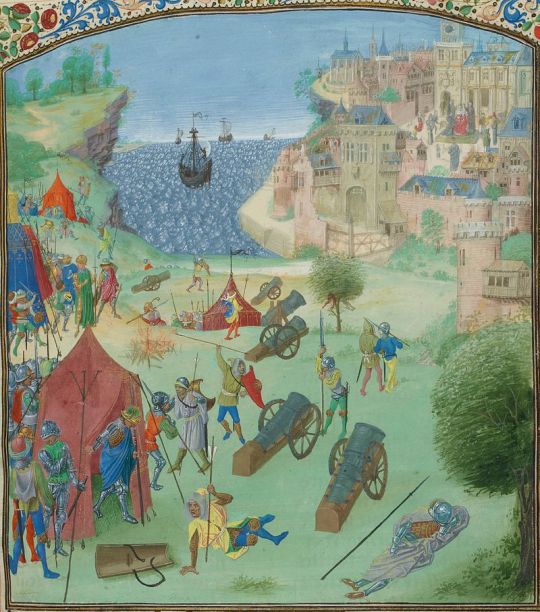
During the siege of Lisbon, he would certainly not have eaten bread made from olive pomace, mauve or herbal roots or frayed the ground to harvest grain, nor resorted to the meat of beasts. But it probably had a worse quality of genre when grain, wine, cattle, poultry and eggs were scarce and their prices were rising, perhaps even resorting to the salty meat that had come to supply the city, and having endured it. a rationing of food and drink, right from the water. Suffice it to recall that Almada surrendered to the Castilians for thirst, having its residents drinking dirty washing or salt water and eating bread crushed with wine, which could only be swallowed when it was hot, and in meat they had to cook meat and fish.
We rarely surprise the King of Avis to have any meal in military settings. At Easter 1387, spent in the village of Benavente de Campos, where there was not much cattle or food, as Chronicle tells us, at night D. João I asked for wine and fruit and was in conversation with his men.

Already on the return of the Anglo-Portuguese campaign for Castile lands, even though there was little meat, D. João did not do without beef, cooked in three different ways.

But in some tougher campaigns, the same thing might have happened to him as Nuno Álvares Pereira, when he was struggling with the Castilians over Alentejo lands, who for a day had nothing more to eat than a loaf of bread:

a small horseradish:

and some wine, which a man carried in a little gourd:

At the royal table came the finest delicacies for dinner (meal served between 11 and 12 hours in the morning) and supper (served between 6 and 7 hours at night).
On normal days, three plates of meat could be tasted at dinner and two at supper, as well as other unaccountable vines, between hunting and shellfish:

Meat, hunt, fish, accompanied by bread and wine, followed by fruits and sweets would not be lacking, with the real distinction being made by the quality of the products and their exquisite confection. In the superior refinement of the table of the great, the best pastries were not simply boiled, baked, undone, slaughtered or fried, but they were manipulated in many of these ways before presenting themselves in dishes such as meatballs:

pastries:

pies:


confectionery:

or canned:

We know that D. João I, who would certainly eat well, did not do without cooked, roasted and “undone” beef:

(minced or in sausages):
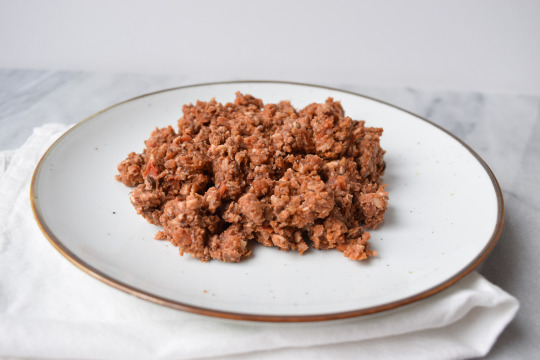
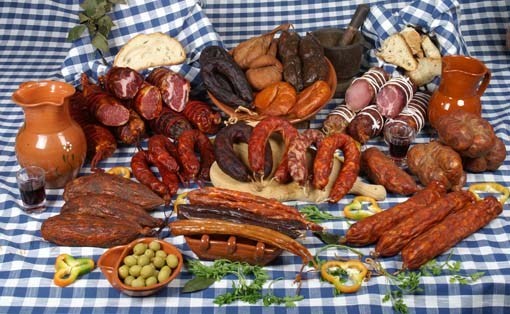
But at court, and certainly at his table, would also eat pork:

rabbit:
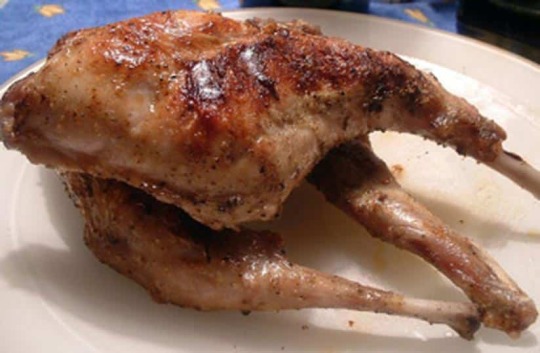
and poultry, especially that of the beloved partridges:

And I would like a spicy food with different palates. For this reason, large amount of spices from the earth or imported entered into the royal kitchens.

In 1424 the treasurer of King João I received about 5 and a half pounds of pepper and the same amount of white ginger, 2 pounds and 720 grams of cloves:

and 6 pounds and 800 grams of cinnamon and cinamomo:
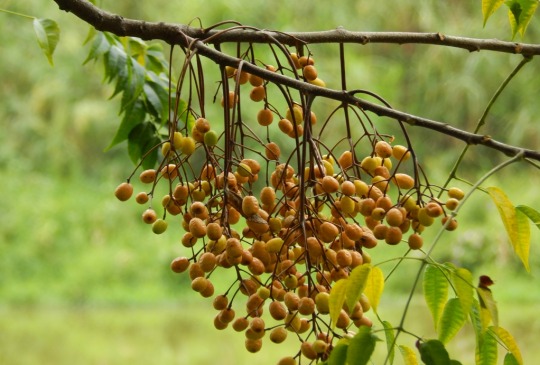
In the following years from 1426 to 29 the values amounted to 11 pounds of pepper, 5 and a half pounds of ginger, 467 pounds and 440 grams of saffron and 11 pounds of cinnamon and cinamomo.
(continue...)
4 notes
·
View notes
Text
Horror Documentaries
Please note: Permanent link availability is NOT guaranteed. If I could archive them, I would.
American Grindhouse (2010)
Nightmares in Red, White, and Blue (2009)
Blood on the Reel (2015)
Snuff: A Documentary about Killing on Camera (2008)
The American Nightmare (2000)
The 50 Best Horror Movies You’ve Never Seen (2014)
100 Years of Horror (1996) [1][2][3][4][5][6][7][8][9][10][11][12][13][14][15][16][17][18][19][20][21][22]
Attack of the 50 Foot Monster Mania (1999)
Bloodsucking Cinema (2007)
Clive Barker’s A-Z of Horror (1997)
Going to Pieces: The Rise and Fall of the Slasher Film (2006)
Kingdom of Shadows (1998)
Machete Maidens Unleashed! (2010)
Monsters and Maniacs (1988)
Midnight Movies: From the Margin to the Mainstream (2005)
Not Quite Hollywood (2008)
Sci-Fi Boys (2006)
Scream and Scream Again: A History of the Slasher Film (2000)
Under the Scares (2010)
Zombie Mania (2008)
Still Screaming: The Ultimate Scary Movie Retrospective (2011)
The AckerMonster Chronicles! (2012)
Magic, Murder and Monsters: The Story of British Horror and Fantasy (2007)
Stephen King’s World of Horrors (1987) [1][2][3]
Bits and Pieces: Bringing Death to Life (2003)
Blood and Black Lace: A Short History of the Italian Horror Film (1999)
Special Effects Documentaries:
Fantastic Flesh: The Art of Make-Up EFX (2008)
How NOT to Make a Horror Film (2015)
Scream Greats, Vol 1: Tom Savini, Master of Horror Effects (1986)
Smoke and Mirrors: The Story of Tom Savini (2015)
Jack Pierce: The Maker of Monsters (2015)
Nightmare Factory (2012)
Men in Suits (2012)
Ray Harryhausen: Special Effects Titan (2011)
Special Effects: Anything Can Happen (1996)
Movie-Specific Documentaries
Apocalypse Soon: The Making of Citizen Toxie (2002)
Farts of Darkness (2016)
Poultry in Motion: Truth is Stranger than Chicken (2008)
Fury of the Demon (2015)
Room 237 (2012)
Tod Browning’s Freaks: The Sideshow Cinema (2004)
Texas Chainsaw Massacre: A Family Portrait (1988)
The Shark is Still Working (2007)
Halloween: 25 Years of Terror (2006)
Sleepless Nights: Revisiting the Slumber Party Massacres (2010) [1][2][3]
Leviathan: The Story of Hellraiser and Hellraiser III (2015)
The Making of Hellraiser (1987)
Lost Soul: The Doomed Journey of Richard Stanley’s Island of Dr. Moreau (2014)
The Psycho Legacy (2010)
The Curse of the Omen (2005)
Full-Tilt Boogie (1997)
Hail to the King: 60 Years of Destruction (2014)
Long Live the King (2016)
Creature Feature: 60 Years of the Gill-Man (2014)
Beware the Moon (2009)
Best Worst Movie (2009)
Autopsy of the Dead (2009)
As Timeless as Infinity: The Twilight Zone Legacy (2014)
Ghostheads (2016)
Cleanin’ Up the Town: Remembering Ghostbusters (2017)
Crystal Lake Memories (2013) [1][2]
His Name Was Jason (2009)
More Brains! (2011)
They Won't Stay Dead: A Look at Return of the Living Dead Part II (2011)
Love Beyond the Grave: A Look at Return of the Living Dead III (2011)
Scream: The Inside Story (2011)
Never Sleep Again: The Elm Street Legacy (2010)
Unearthed and Untold: The Path to Pet Sematary (2017)
Just Desserts: The Making of Creepshow (2007)
You’re So Cool, Brewster! The Story of Fright Night (2016)
Document of the Dead (1979)
The World’s End: The Making of Day of the Dead (2013)
Medieval Times: The Making of Army of Darkness (2015)
Tales from the Crypt: From Comic Books to Television (2004)
My Amityville Horror (2012)
Documentaries About Directors:
De Palma (2015)
King Cohen: The Wild World of Filmmaker Larry Cohen (2017)
Birth of the Living Dead (2013)
Dead On: The Life and Cinema of George A. Romero (2008)
The Dead Will Walk (2004)
Doc of the Dead (2014)
Blood, Boobs, and Beast! (2007)
Corman’s World: Exploits of a Hollywood Rebel (2012)
Dario Argento: An Eye for Horror (2000)
Dario Argento: Master of Horror (1991) [1][2][3][4][5][6]
Clive Barker: The Art of Horror (1992)
Divine Trash (1998)
In Bad Taste (2000)
Diary of a Deadbeat: The Story on Jim Vanbebber (2015)
Ed Wood: Look Back in Angora (1994)
Hershell Gordon Lewis: The Godfather of Gore (2010)
Hitchcock/Truffaut (2015)
The Men Who Made the Movies: Alfred Hitchcock (1973)
John Carpenter: The Man and His Movies (2004)
Master of Cinema: John Carpenter (2000)
Long Live the New Flesh: The Films of David Cronenberg (1987)
Shadows in the Dark: The Val Lewton Legacy (2005)
Val Lewton: The Man in the Shadows (2007)
Spine Tingler! The William Castle Story (2007)
They Came from the Swamp: The Films of William Grefé (2016)
Son of the Incredibly Strange Film Show: George A. Romero & Tom Savini Documentary (1989)
Documentaries About Actors:
To Hell and Back: The Kane Hodder Story (2017)
I Am Divine (2011)
I Am Nancy (2011)
I Am Thor (2015)
That Guy...Who Was in That Thing (2012)
That Guy Dick Miller (2014)
Bride of Monster Mania (2000)
Invasion of the Scream Queens (1992)
Scream Queens: Horror Heroines Exposed (2014)
Screaming in High Heels: The Rise and Fall of the Scream Queen Era (2011)
Some Nudity Required (1998)
Something to Scream About (2003)
Welcome to My Dark Side (2009)
Lon Chaney: A Thousand Faces (2000)
Documentaries About Horror Hosts:
American Scary (2006)
Every Other Day Is Halloween (2009)
Uncovering Elvira Mistress of the Dark (????)
Vampira and Me (2012)
Vampira: The Movie (2006)
Watch Horror Films, Keep America Strong! (2008)
Virginia Creepers (2009)
Hi There Horror Movie Fans (2011)
Documentaries About Writers:
Anne Rice: Birth of the Vampire (1994)
Charles Beaumont: The Short Life of Twilight Zone’s Magic Man (2010)
Edgar Allen Poe: The Mystery of Edgar Allen Poe (1994)
Lovecraft: Fear of the Unknown (2008)
A Night at the Movies: The Horrors of Stephen King (2011)
Stephen King: Shining in the Dark (1999)
Documentaries About Studios:
Amicus: House of Horrors (2012)
Amicus Vault of Horrors (2015) [1][2][3][4]
Electric Boogaloo: The Wild, Untold Story of Cannon Films (2014)
The Go-Go Boys: The Inside Story of Cannon Films (2014)
Flesh and Blood: The Hammer Heritage of Horror (1994)
Hammer: The Studio That Dripped Blood! (1987) [1][2][3][4][5]
It Was a Colossal Teenage Movie Machine (2015)
Make Your Own Damn Movie! (2005)
MGM: When the Lion Roars (1992) [1][2][3][4][5]
Hollywood’s Golden Years: The RKO Story (1987) [1][2][3][4][5][6]
Universal Horror (1998)
Clip and Trailer Collections:
Mad Ron’s Prevues From Hell (1987)
Celluloid Bloodbath: More Prevues From Hell (2012)
Terror in the Aisles (1984)
Coming Soon (1982)
Zombiethon (1986)
The Best of Sex and Violence (1981)
The Best of All Time Horror Classics (1985)
42nd Street Forever (2005) [Vol 1][Vol 2][Vol 3][Vol 4][Vol 5]
Grindhouse Trailer Classics (2007) [Vol 1][Vol 2][Vol 3]
Bravo’s 100 Scariest Movie Moments (2004) [1][2][3][4][5]
30 Even Scarier Movie Moments (2006) [1][2]
Linnea Quigley’s Horror Workout (1990)
Full Moon Video Zone (short “making of” segments that were added to the end of many Full Moon Productions VHS releases):
Puppet Master II
Puppet Master III
Puppet Master 4
Puppet Master 5
Curse of the Puppet Master
Retro Puppet Master
Netherworld
Seed People
The Creeps
Talisman
Mandroid
Hideous!
Doctor Mordrid
Shrieker
Castle Freak
The Pit and the Pendulum
Dollman
Demonic Toys
Dollman VS Demonic Toys
Lurking Fear
Witchouse
Blood Dolls
Bad Channels
Shrunken Heads
Subspecies
Subspecies II
Subspecies III
Subspecies 4
Dark Angel: The Ascent
Oblivion 2: Backlash
Other:
Adjust Your Tracking: The Untold Story of the VHS Collector (2013)
Rewind This! (2013)
VHS Forever? Psychotronic People (2014)
VHS Massacre: Cult Films and the Decline of Physical Media (2015)
The American Scream (2012)
Halloween: The Happy Haunting of America (1997)
Legion of Terror (2009)
Horror Café (1990)
Dear Censor (2002)
The Aurora Monsters: The Model Craze that Gripped the World (2010)
Doc of the Dead (2014)
Famous Monster: Forrest J. Ackerman (2007)
Fantasm (2013)
I Heart Monster Movies (2012)
The Night SHE Came Home (2013)
The Rep (2012)
UnConventional (2004)
The Walking Dead Girls (2011)
Why Horror? (2014)
Down with Clowns (2014)
In Search of Dracula (1975)
Vincent Price’s Dracula (1982)
Killer Legends (2014)
Scream Greats 2, Vol. 2: Satanism and Witchcraft (1986)
The Witch’s Dungeon: 40 Years of Chills (2006)
Fangoria’s Weekend of Horrors (1986)
Gorgon Video Magazine, Vol. 1 (1989)
Gorgon Video Magazine, Vol. 2 (1990)
Mr. Mike’s Mondo Video (1979) (just because)
Upcoming Documentaries:
Forgotten Scares: An In-Depth Look at Flemish Horror Cinema (2018)
Something Wicked This Way Comes (TBA)
The History of Metal and Horror (TBA)
Rocky Horror Saved My Life (TBA)
Scream, Queen! My Nightmare on Elm Street (2018)
Celluloid Wizards in the Video Wasteland: The Saga of Empire Pictures (TBA)
Lastly, here is my “Horror Documentaries” playlist, which contains additional documentaries not listed here.
I only wish I could have provided links for every documentary listed here, but I hope there are enough here to satisfy your horror documentary needs.
Happy Halloween!
#list#horror#documentary#links#veehd might still be down right now#but there are plenty right on good old Youtube
472 notes
·
View notes
Text
Youth of a Lifetime
As I look into the window of one man’s past, imagining a one-way flight or passing through the turbulence of deep waters, he welcomes me to his home. I trod through the footsteps of his journey in a rather poetic language.
The narrative begins with foreign blood invading native soul, the time when the Americans and the Japanese had occupied the Philippines. The cruelty of those akin to aliens in foreign soil incited racial abhorrence from the natives towards the colonizers. For some inhabitants in “Guinhalinan, the place where everything springs, the source”, they had unspoken rules to live by regarding other islanders (Veric, 11). Obeisance to these rules would connote citizenship to a certain extent. It is a traditional way of showing affiliation to a certain community, a sign of kinship that the locals were bound to emulate. As the aphorism goes, “the lands unwritten law: Never abandon the place where you were born”. In Veric’s Boyhood, prejudice, for the locals, was a mere fantasy that was the result of being corrupted by the unfamiliar (37).
“Life’s a fool. It’s market day!” (51) This was said to be “the folk philosophy” (51). As I continued my perusal, I have come to terms with the discernment that somehow this could amalgamate the marvel of life in its entirety. In my own experience, market day reminds me of waking up early in the morning, heading to the local marketplace, and hearing the sound of loud vendors yelling for goods to be sold at a certain cost. Meanwhile consumers meticulously scout the place for fresh fish, meat or poultry with the best quality at the most affordable price. In some instances, I find myself staring at butchers chop off flesh of different shapes and sizes. I would look at them with astonishment in the way they hastily, but at the same time, cautiously slice and dice, and afterwards measure their goods and commodities. I end up realizing that market day turns out to be a metaphor of life. I can compare this snippet of the past to that of life at large. How life manages to pass us by going unnoticed. How we try to accurately plan things yet circumstance gets its way of intertwining unexpected upshots. How numerous complications intervene every living human being each day. How anybody, regardless of social class, can never get a free pass to the fright of life’s uncertainty.
To exemplify this in Veric’s poetry, a man went out dancing one night with his wife in the barrio’s fiesta, and amidst the romance of a festive evening, little did he know, he was losing his home and children to tragic flames. To what extent can a person take just to get by despite life’s imperfections; despite its unpredictable capability of being so perfect in one moment, and so suddenly grim the next?
Every day is another market day, life is a fool, and this simpleton cannot be given the chop because his chances of survival comes close to nothing (51).
Onto a more intriguing progression, a chapter depicts a time when the unconventional affairs, such as same-sex relations, were more fraught with scandal as some still consider this controversial to date. The story of a maiden having an affair with the carpenter, the likes of Carlos, bachelor and lover— these were intolerable to society (41). Some argue that these are still unacceptable in present times. Fortunately, time changes the perspective of convention. Providentially, equality is more attainable nowadays, nevertheless, it remains inevitable that “to live was to hear the misdeeds of the living” (52). Because even now, there is a tendency to succumb to the system when society permits that it is more convenient to follow the norm. Louis Althusser in his Ideology and Ideological State Apparatuses put this situation into words, wherein he discussed the concept of “hailing.” He elaborated that, “ideology interpolates individuals as subjects,” and “individuals are always already subjects” (186). This instance was vehemently explicated in Boyhood as well. First, when a person becomes a pariah to a place they call home out of unorthodox love, and perhaps, due to self-preservation, gradually submit to the mores.
In a much larger scale, as rebels attempt to break the norm, innocent lives are taken aback. The woman baking bread is a victim of political vendetta (Veric, 95). Where a person’s youth could be nourished, their lives repressed as “the men in battle fatigues” complete the bidding (96). Hence, the militia that had become an ideological state apparatus, and the individuals that refute societal convention replicate the conflict in attaining the realization of ideology.
And when death becomes the ultimate standoff, life bids farewell, signalling the finish line. Several kinds of denouement befall. For others, there is such a thing called “patnog,” believing that “the soul returned to roam the earth on the third night of death” (102). For “old men who loved in quiet ways,” there is just hope for his beloved to awaken from the cold and lifeless even when there is nothing left to save (103).
As I look into the window of one man’s past, his life as a meek chid, his tales of folklore, his misadventures, the atmosphere of countryside, the air of youth so innocent, so pure, it leaves me to all sorts of enthralment. It is not every day that I come across, and be fascinated in such an uncanny narrative brought inventively through poetry. So, perhaps, it may be the reason why I marvel at the life he has led, of the story he had told, the lyrics he had sung. A person so enamoured as he alone could have the audacity of sharing the tumultuous chronicles of his past. His life reflected through this lyric poetry that has become his anthem, the series of events that came prior to his adolescence. This is the story of Veric’s boyhood, a metamorphosis, and youth of a lifetime that I have, with good grace, inclined to lose myself in.
2 notes
·
View notes
Text
HOW WE FARED IN 2019
We have many reasons to be thankful for this year ending today. It was a remarkable one for us and we are glad we were able to serve you, our customers, better.
Just after we resumed operations after the 2018 flood, we set out to continually produce fresh chicken meat and eggs for your consumption and sales, for those who retail our products. In this post, we chronicle major events that shaped 2019 for us at Tonyve Farms.
FEBRUARY – THE GRANT WRITING CLASS
We kicked off the year with our flagship CSR initiative to raise entrepreneurs by offering a FREE grant writing class for budding entrepreneurs to raise seed capital through the Tony Elumelu Entrepreneurship Programme. We appreciate our partner, Arkeos Partners, a full service law firm run by Barr. Amaemi Bridget Pabor. Another edition will be hosted on the 11th of January, 2020. Stay tuned for more information.
APRIL – CERTIFIED POULTRY SERVICE PROVIDER (PSP)
Our CEO was certified as a Poultry Service Provider (PSP) by the Foundation for Partnership Initiatives in the Niger Delta – PIND (PIND) and Zoetis ALPHA, a global animal health company.
MAY – SMEDAN CAME CALLING
The Small and Medium Enterprises Development Agency of Nigeria (SMEDAN) recognized our work and supported us to do more.
JUNE – IT IS THE BAYELSA BUSINESS LINKAGE PROGRAMME BABY!
Our CEO, Anthony Owei was invited as a special guest to the Bayelsa Business Linkage Programme hosted by the Bayelsa State Government and powered by the Zigha’s Ayibakuro Limited. He anchored a panel session that focused on opportunities in the agribusiness and agriculture value chain as it relates to not only Bayelsa but the Niger Delta region.
JULY – OBAMA FOUNDATION NAMED OUR CEO AS AN OBAMA AFRICA LEADER AND WE SIGNED A US $ 5000 DEAL
Our CEO was named among other 200 rising leaders across Africa by the Obama Foundation as Obama Africa Leader for his work in the agribusiness and food security space, helping to lift smallholders from poverty and contributing to achieving global food security. https://www.obama.org/africa/
Later that month, we signed an expansion investment deal with the foremost private equity firm, Brass & Books Financial Services, to the tune of US $ 5000 in order to consolidate our expansion plans which saw us previously raised similar expansion funding from the Bank Of Industry, Nigeria in 2018.
AUGUST – WE ARE IN THE MEDIA
BellaNaija, one of Africa’s biggest lifestyle, entertainment and fashion website named our CEO as her Man Crush Monday for his outstanding work in the agriculture space in Africa. https://www.bellanaija.com/…/bellanaijamcm-this-week-is-an…/
Same month, our CEO announced his selection as an Orange Knowledge Programme Scholar, a Dutch Government global development programme funded by the Dutch Ministry Of Foreign Affairs and managed by Nuffic. He is currently studying for an MBA in Food Security Business School Netherlands on this fully funded Dutch Government Scholarship.
NOVEMBER
This month, we opened another farm/production facility at Igbogene Yenagoa of over 9000 Birds to our already existing 4000 birds capacity Gbarantoru facility in order to increase our production and output in order to serve you, our customers and consumers better. This was a giant leap for us as it tripled our foothold within the Bayelsa market.
GOING FORWARD TO 2020
We will further consolidate on our expansion efforts to continually meet your chicken meat and egg needs even as the continued border closure as necessitated consumption of local produce. Additionally, we shall extend our sound knowledge in the industry by democratizing it to as many people as possible in order to create an ecosystem of agribusinesses working to create wealth and help Nigeria and in extension Africa achieve food security for our people. In this vein, if you intend to set up commercial farms, you can use our consulting services or send your staff or yourself to our training schools/programmes in order to acquire the necessary skill and education to thrive as an agropreneur, especially in poultry farming.
Finally, in order to serve you better, we will be launching our newest subsidiary called Chicken Palace, a chicken retail outlet based in the Yenagoa metropolis (location to be revealed soon) so as to ensure you get freshly processed, locally grown chicken meat and chicken eggs with no preservatives at your doorsteps with our excellent home delivery service.
This will also provide more farmers’ access to market as Chicken Palace will serve as an off taker, helping farmers to make more profit by helping them sell their produce, allowing them to focus on production, with the ultimate goal of complementing government efforts to create jobs and grow our economy using the agriculture value chain.
With this, we wish you a happy new year 2020 while thanking you for your support, partnership, loyalty and patronage in the past and in many years to come.
HOW WE FARED IN 2019 We have many reasons to be thankful for this year ending today.
0 notes
Link
THERE’S AN ANCIENT Hindu fable that dates back to at least 300 BCE, about a childless couple who decide to adopt a mongoose. They raise the creature as if it were a son, feeding it, letting it live among them in their house. Eventually they also have a child, and the mongoose becomes its faithful protector, even as the couple begins to quietly distrust the animal. One day, returning home, they find the house in disarray, the crib overturned, the baby missing, and the mongoose’s mouth stained with blood. Horrified, they kill the mongoose. Only later do they realize what had happened: a snake had entered the house, intent on eating the child, and the mongoose fought it to the death. The blood on its mouth was the snake’s blood; underneath the upturned crib they find their child, unharmed.
The fable warns against rash action, of course, but also against greed and hubris. The couple in the story have tried to have both a human child and this other child, and by bringing a wild creature into their household they have upended the domestic order. It’s a lesson James Irving and his family learned firsthand. In 1916, Irving and his family moved to a remote farmstead on the Isle of Man known as Doarlish Cashen, about a mile from the tiny village of Dalby. There he lived with his wife Margaret and young daughter Voirrey until the early 1930s, when a talking mongoose named Gef appeared and took over their family.
In an exhaustive chronicle running close to 400 pages, the paranormal researcher Christopher Josiffe has attempted to chronicle the story of Gef and the Irvings, as well as make sense of just what happened on Doarlish Cashen. Gef!: The Strange Tale of an Extra-Special Talking Mongoose is, as the artist B. Catling writes in his introduction, “the definitive account of a story that refuses to become definitive,” a mystery whose possible explanations only invite more questions.
Gef (pronounced “Jeff”) first appeared in September 1931, when the Irvings began hearing tappings and knockings that they initially assumed was a mouse, and subsequently thought to be a small weasel or stoat trapped in the walls of their farmhouse. On October 20, James and Voirrey finally got a glimpse of the creature, a yellow and brown “ratlike” animal with a long, bushy tail. The animal lingered, continuing to make noise, but by December these noises had become distinctly less animal in nature; they sounded, the Irvings later told the Isle of Man Examiner, “similar to a baby child beginning to talk,” and before long the family “heard definite words issuing from the walls.” More curious than frightened, they tried to teach their strange new visitor nursery rhymes, which within a week he could repeat back to them. Soon he could speak fluently and conversationally. “From that time on,” the Examiner reported, “this queer body has repeated parts of their conversations, has discussed their private lives with them, and has retailed gossip gleaned from the outside.” A quick study, Gef not only spoke English, but in time also picked up other languages, including bits of French, German, Yiddish, Flemish, Spanish, and Hebrew. He enjoyed singing songs and telling jokes, could change shape, and appeared to be clairvoyant.
It was not clear to the Irvings or anyone else what exactly Gef was: a ghost, a cryptid, a hallucination? James Irving (who did most of the talking on behalf of the family) would often offer conflicting assessments. “I never said that he was a mongoose,” he writes in one letter. “I don’t think he is an animal. I think he is a spirit in animal form.” In another letter, however, he contradicted this statement, writing, “Undoubtedly, he is a species of mongoose, but whether a hybrid or not, I cannot say.” Gef himself would later claim that he was an Indian mongoose, and that he had been born 80 years earlier, on June 7, 1852, and had come from Delhi. He was initially known as “the Dalby spook,” a name Josiffe prefers over “talking mongoose,” in that the former “is more ambiguous. It does not restrict Gef to being identified as a mongoose. ‘Spook’ suggests something uncanny or supernatural, and places Gef within the context of Manx myth, legend, and fairy tale.”
Gef was initially hostile toward the Irvings, terrorizing them at night, insulting and threatening them, even throwing rocks at the family. Within a year, though, they had struck a truce with Gef, who subsequently became a part of the family. He ate the food they left out for them, and would catch and kill rabbits that he would leave on the doorstep (he was apparently prodigious enough at this that the Irvings sold surplus rabbits in Darby). He would stick up for them, offering to slaughter the livestock of any of Irving’s enemies, and he was particularly protective of young Voirrey.
While a singing, joke-telling mongoose seems delightfully absurd and comical, like something out of a children’s cartoon, there are dark elements to the story. Gef had a mean streak bordering on violence; Irving reports that he once told him, “If you are kind to me, I will bring you good luck. If you are not kind, I will kill all your poultry. I can get them wherever you put them.” On another occasion, he was even more threatening: “You don’t know what damage or harm I might do if I were roused. I could kill you all if I liked but I won’t.”
¤
As word got out about Gef, James Irving became something of a local celebrity. Several paranormal investigators, spiritualists, and skeptics made the pilgrimage out to the remote farmstead to figure out what exactly was happening. Among those who traveled to the Irvings’ homestead looking for evidence of Gef was the spiritualist book publicist Norah Nicholls (she would later be press secretary to Virginia Woolf, who described her as a “flashy underworld flibbertigibbet”). Nicholls concluded that the local “general attitude is of outward scepticism but inward nervousness — there is Something there; but how can an animal talk? People in the village won’t go near the place […] no one will go there at night.”
The conclusion gradually becomes inescapable, as one reads Josiffe’s book, that Gef was a creation of Voirrey, or perhaps Voirrey and Margaret in concert. (It’s possible that the entire family was involved in some kind of ruse, but James Irving’s steadfast earnestness about the whole Gef affair has led many to conclude that he was innocent of any plot.) There were numerous signs that the daughter was behind the strange occurrences, and Josiffe peppers them throughout his narrative, strongly implying that Gef was Voirrey’s creation without ever outright saying so. From the beginning, there were rumors that Voirrey was the origin of Gef’s voice: “Does the solution of the mystery of the ‘man-weasel’ of Doarlish Cashen lie in the dual personality of the 13 year-old girl, Voirrey Irving?” the Dispatch asked the day after first reporting on the phenomenon. Early on, Josiffe quotes a local man remembering his late mother-in-law’s comment that the Irvings “always had a mongoose to catch & eat the cockroaches, & it was at tea time Voirrey would throw her voice as if the mongoose was talking…”
Why would Voirrey invent such a strange creature? Living alone with her parents in a remote part of a remote island, Voirrey’s intellect and curiosity may have been stifled, and Gef may have been one by-product of her curious and lonely existence. As one of the principal investigators of the Darby mystery, Richard Stanton Lambert, commented to several of his colleagues, “You must admit that Voirrey has had an unnatural upbringing for a child. She is very lonely, has only her parents for company, and they are so much older. No young people around. We wanted to talk to Voirrey ourselves, but she is close and very reserved…” Additionally, Gef’s propensity to look out for Voirrey seems suspect: Harold Dennis, of London’s National Laboratory of Psychical Research, had been trying to get definitive proof of the Darby Spook when he was told by James Irving that Gef “had been talking that morning, and had promised to speak to me in the evening providing that I made a promise to give Voirrey a camera, or gramophone!”
Sensing that Voirrey held the key to the whole mystery, Lambert and his colleague Harry Price proposed to take her on a boat tour of the Isle of Man, hoping to get her away from her father in order to learn more about the true nature of Gef. Voirrey, intelligent but largely sheltered, quickly agreed, but James stymied their plan by accompanying them and monopolizing the conversation (as Price and Lambert had feared he would). A subsequent attempt to get her to come to London unaccompanied was similarly rebuffed. Despite strong evidence that Voirrey was behind the entire mystery — or at least knew the truth of what was happening — no one could get past James Irving’s loquacious defenses, meaning any hypothesis about Gef remained provisional.
A teenage girl’s prank causes mayhem among rural simpletons: that might seem to be the end of the story. But there are problems with the Voirrey hypothesis that make the case of Gef that much harder to dismiss. The main issues involve motive. Some have argued that Voirrey, unhappy to find herself on a remote part of a remote island, conjured the haunting to convince her father to move the family back to the mainland. If Doarlish Cashen was haunted by a malevolent spirit, perhaps, then Voirrey could have lobbied for a move to somewhere less isolated. But if this was the strategy, it backfired; the Irvings didn’t leave until James Irving died in 1945, after the Gef sightings had died down. Nor could it have been the case that the Irvings were only doing this for money; as James himself confessed, the farm’s reputation as a home for ghostly visitors decreased its value to less than half of what he paid for it.
Add to this the odd habit James Irving had of seemingly revealing the various ways in which his daughter was behind the trick. Take, for example, Gef’s famous ability to catch rabbits; since they were sold in town, these were some of the few tangible items of proof that something was happening. But as Josiffe notes, Irving himself was “quite open about Voirrey’s own rabbit-hunting skills — he could have concealed this (for fear that it offered a simple explanation for the source of the rabbits) — but chose not to.” As Lambert recalled being told by Irving,
Voirrey and Mona (the dog) had developed a method of catching the rabbits. Voirrey would tell Mona to point a rabbit, who became mesmerised, and Voirrey would creep round behind the rabbit, and knock on the head with a stick or something, and thus kill it. The rabbit would be too mesmerised to move.
When James Irving was asked to provide physical proof of Gef, he sent Harry Price some supposed fur samples, but laboratory analysis quickly determined that the fur came from a dog, likely Mona. Why would Irving offer such an easily debunked piece of evidence — and, if he wasn’t in on it, why would Voirrey let him? Not only are the usual motives for fraud inapplicable here, but if it was all a hoax, the Irvings seemed to be recklessly unconcerned with maintaining it.
Nor was it that easy to write off the Irvings as delusional or mentally unstable. From the beginning, witnesses focused on Irving and his family’s sanity and sensibility; one of the earliest stories on the Darby spook, in the Isle of Man Examiner, concludes: “Our story may leave the reader unconvinced, it may be unconvincing, but it is backed by the assurance of as sane a man as one could ever meet, and at that we must leave it.” Another reporter from mainland England noted that “the people who claim it was the voice of the strange weasel seem sane, honest, and responsible folk and not likely to indulge in a difficult, long drawn-out, and unprofitable practical joke to make themselves the talk of the world.” Even the more devoted investigators who spent a prolonged period with the Irvings saw them as basically trustworthy, despite the incredulous tale and minimal proof. Harold Dennis, writing to Harry Price, confessed: “I don’t quite know what I really think, as the attitude of the Irvings has rather defeated me. Mr Irving appears to be a perfectly genuine man, and quite above the Manx farming class.”
Could the Irvings, then, have been telling the truth? This is the conclusion of many who’ve contemplated the Darby Spook, and at times it seems to be Josiffe’s as well. “Despite the clear evidence of hoaxing, it should be emphasised that an acknowledgement of fraud having been perpetrated in certain instances does not necessitate the entire opus of phenomena being fraudulent,” he warns.
The annals of psychical research are full of cases of Spiritualist mediums whose paranormal ability was only intermittent, causing them to fabricate or simulate on those occasions when they were committed to giving a public performance but unable to produce genuine phenomena.
Statements like this reflect the curious logic of the occultist’s Occam’s razor. First, an exceptional story is proposed: a talking mongoose with supernatural powers lives with a family. Second, debunkers propose a series of obvious explanations: fraud, delusion, et cetera. Third, the believer responds by casting doubt on these provisional hypotheses, and finally claims that the original implausible hypothesis, however unlikely, must be true. Because no definitive debunking has been proved, the occultist can claim victory. Visitation by a supernatural mongoose is thus considered more plausible, more realistic, than a family perpetrating an elaborate hoax for no sensible reason. The assumption here seems to be that while the world may be fantastical, unknowable, vast, and infinite with its strange and supernatural possibilities, human psychology is simple, and reducible to a set of finite causes and motivations. If the Irvings were sane and unable to profit, or uninterested in profiting, off of Gef, then, such logic runs, a talking mongoose is suddenly the most reasonable answer.
Indeed, the more likely story — that Gef never really existed — is in many ways more unsettling than the paranormal explanation, mainly because it defies a number of common assumptions about human psychology, and the way a small family, mainly isolated, might grow in strange ways. Looking for a motive beyond profit and fame suggests a family in turmoil, a crisis that manifested itself in a mischievous and protective supernatural creature. Did Voirrey invent Gef to connect with her father? Josiffe notes that Irving claimed his daughter was “not an affectionate child,” and that the only one of his children he’d been close to was his son Gilbert (who, by the time of Gef’s appearance, had moved to the mainland). Unsurprising, then, that Gef emerged as a replacement son for James: “James Irving’s fondness for Gef was matched by Gef’s warm feelings for ‘Jim’ or ‘Jimmo.’ As if in acknowledgement of a father-son relationship, Gef would ask Irving to tell him ghost stories at night.”
Even more disturbing: Perhaps Voirrey used Gef to protect herself from her father. Gef supposedly James that “I’ll follow her, wherever you move her!” — a statement that the Irvings read as menacing, but which also suggests that Gef wasn’t about to let anyone else menace the teenage girl, either. Through the years there have been several veiled insinuations that Voirrey might have been the victim of sexual abuse, though no evidence of such abuse ever emerged, and with British libel laws being extremely stringent, investigators were careful never to make this accusation openly. It’s possible that Gef was an amalgamation of many of these things. Within a fractured, hermetic, and isolated family, strained by intrafamilial tensions and psychological pressure, a mercurial and malleable entity emerges that can negotiate these tensions, and serve as an outlet and scapegoat as needed.
Gef’s story is interesting in another way. As a magical figure, he breaks the mold of the taxonomy of the paranormal. Was he a ghost, a supernatural animal, a witch’s familiar? Each of these different mythological creatures, after all, accomplishes a different psychological and sociological function. To call something a ghost is to invoke a host of associations: an uncertainty about what happens after death, a mourning not yet finished. Nature sprites, on the other hand, reflect our ambivalence and ignorance toward the natural world itself: a landscape that is not just unknown and dangerous, but magical and treacherous. The motif of witches’ familiars takes this ambivalence toward wild animals and mobilizes it against women.
Changing his nature and constitution throughout the years, Gef was all of these things, and thus none of them. A hodgepodge of different folk beliefs, each of which spoke to a different set of anxieties and aspirations, Gef could speak to none of these psychological needs, no matter which language he used. It’s possible, then, to read Gef as a product of a singular kind of artistic genius on the part of Voirrey or her family. All of these various categories — ghosts, familiars, imps, et cetera — are the product of a collective and communal vision, passed down through centuries without author or design, gradually molding to the needs of each time and place. Gef can be seen as a work of folk art in this tradition, a synthesis of Indian, Celtic, Christian, and 19th-century Spiritualism.
Because Voirrey Irving never, even to her dying day, confessed to the true story of Gef, we’ll never know for sure what went on. Perhaps in this she was thinking of the sad tale of Margaret and Kate Fox. In 1848 the Fox sisters started the Spiritualist craze that swept through North America (and soon, the world), by communicating with spirits via a strange rapping noise. Forty years later, Margaret finally confessed that the entire thing had been a hoax, and demonstrated how she and her sister had created the rapping noise by secretly cracking their toe joints. The outrage from the Spiritualist community was so vitriolic that Margaret was eventually forced to recant her confession, affirming the proof of ghosts under extreme duress.
Without any word from Voirrey, we are left only with a story of something strange that once happened to a family. It’s a story of a fascinating and disturbing psychological portrait of a small family, mostly cut off from the world, the facts of which are buried under so many layers of folklore, paranormalism, quackery, and pseudoscience that we’ll likely never understand what was really going on. There are no lessons here to learn — except, perhaps, for one we’ve known for centuries: never welcome a mongoose into your home.
¤
Colin Dickey is the author, most recently, of Ghostland: An American History in Haunted Places.
The post Speak, Mongoose: On “Gef!: The Strange Tale of an Extra-Special Talking Mongoose” appeared first on Los Angeles Review of Books.
from Los Angeles Review of Books http://ift.tt/2xwj9iF
0 notes
Text
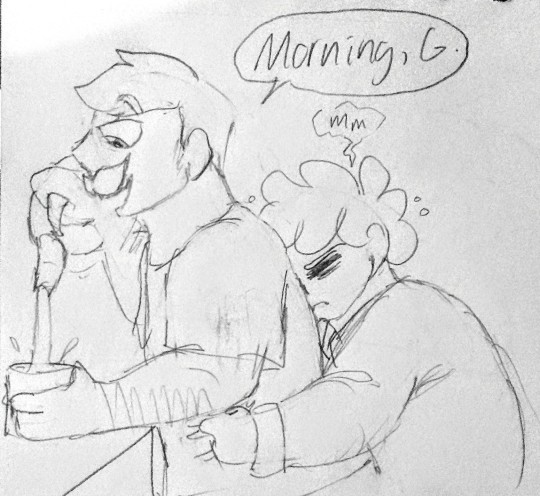
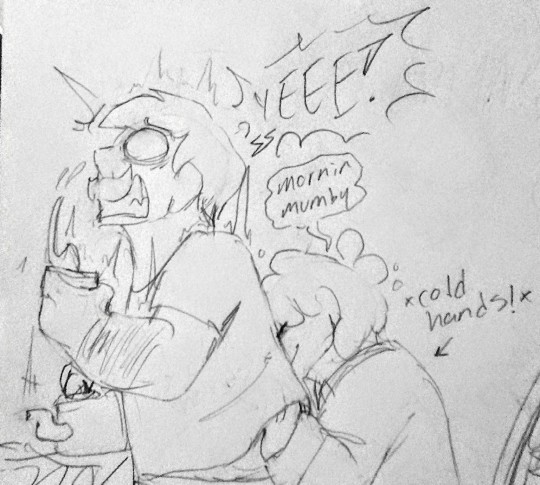


Teeny Grumbo pile! (Feat. My Poultry Man au)
214 notes
·
View notes
Text
thinking about the poultry man au again 👀
25 notes
·
View notes
Note
Hey hey. What is Poltrey Man gets taken over by the Mycelium : ). Something is clearly wrong with him but he keeps telling everyone that everything is *fine* he’s *fine* but he’s not fine. He’s slower and more sluggish and Doc is getting closer and closer to catching him. There’s also a very villian calling themselves Mother Spore and anything they walk on gets covered in mushrooms of all kinds, even things like wood and concrete and once they stood on a Diamond block and even it became infested as they look Scar in the eyes and coo, “my children will cover this city and help me control this host. Soon the host will be gone and it will just be I, Mother Spore.” Grian doesn’t know he’s Mother Spore. -AA
....YOU ARE THE SMARTEST PERSON ON TUNGLE
#I LOVE THIS SO MUCH???????#LIKE GRIAN HAS BLACKOUT PERIODS BUT HE ALWAYS WAKES UP AT HOME SO HE ASSUMES HES FINE#BUT HES NOT#SO HE GOES TO SCAR TO TRY AND FIND A CURE FOR HIS FUNGAL POSSESSION#GODDDDDDDDD#THIS IS SO FUCKING GOOD I LOVE THIS#the poultry man chronicles#meraki answers#angst#fav
81 notes
·
View notes
Note
recently been looking at that poultry man au stuff. what if he suddenly disappears and reappears with new gear or even powers... because one late night Iskall dared Grian to eat one of sally's eggs and whoops now he's got real wings. He took some days off to figure them out (as well as try to figure out how to hide them when as a civilian)
JSFSKGGJ THAT'S SO CUTE??? I LOVE THAT I MIGHT ACTUALLY MAKE THAT AN ISSUE IF I'M ALLOWED
39 notes
·
View notes